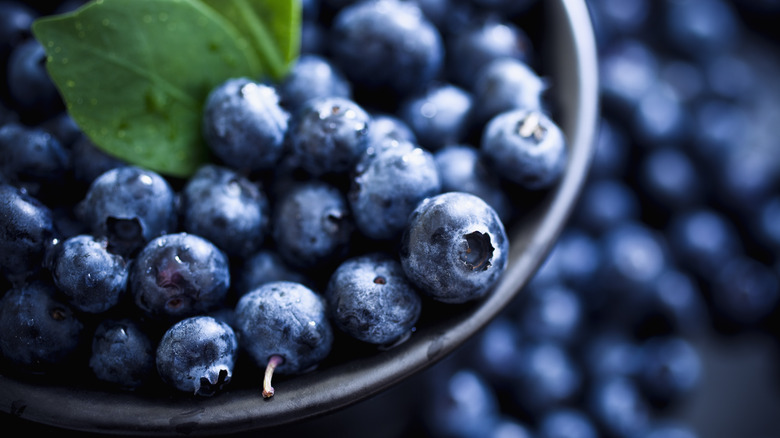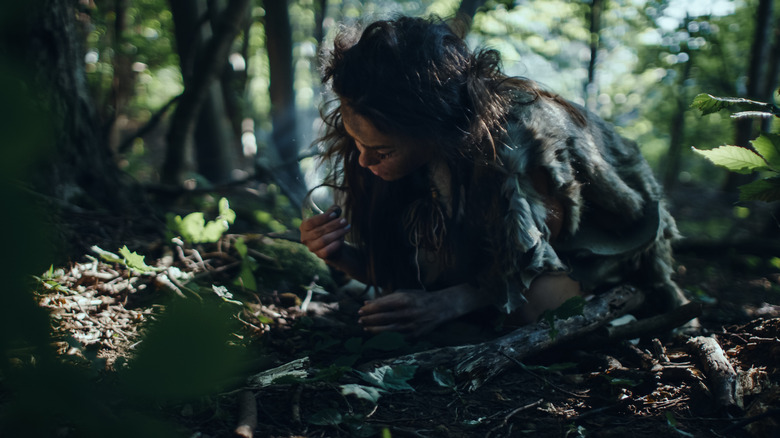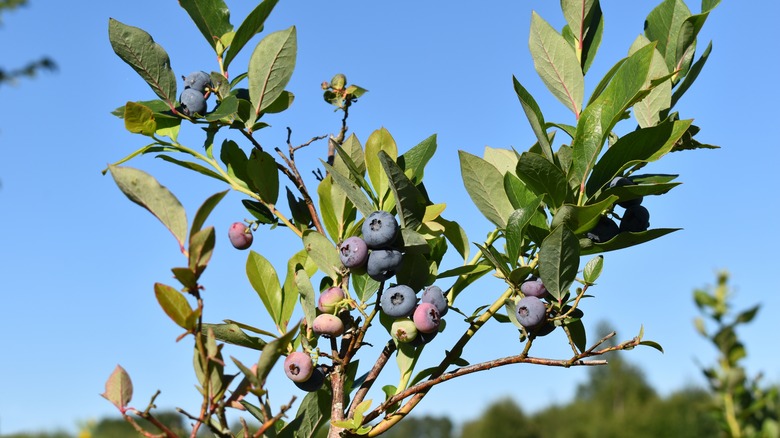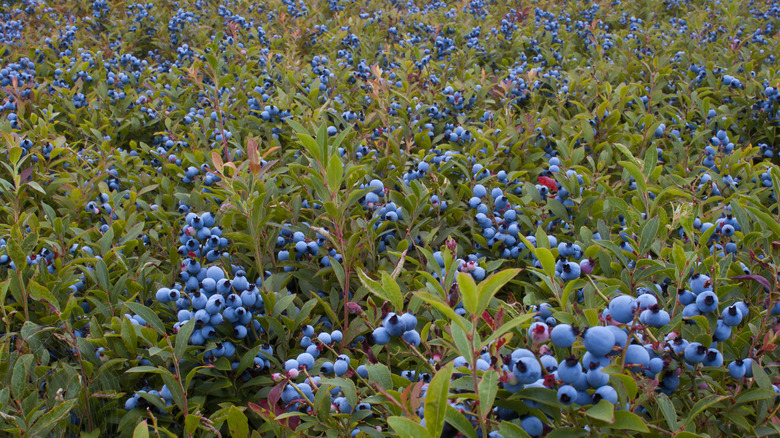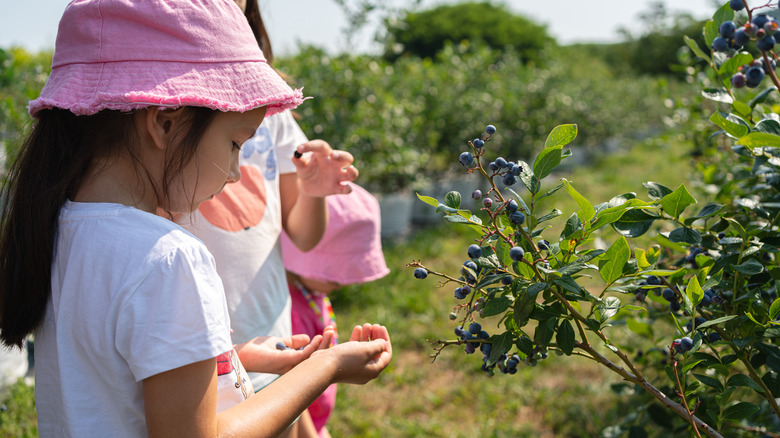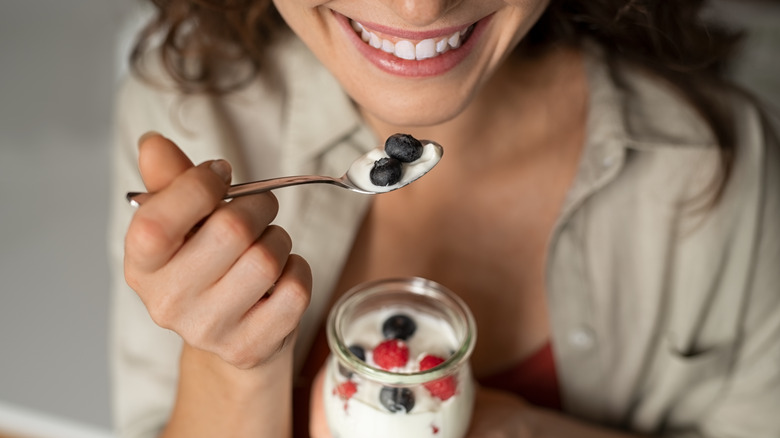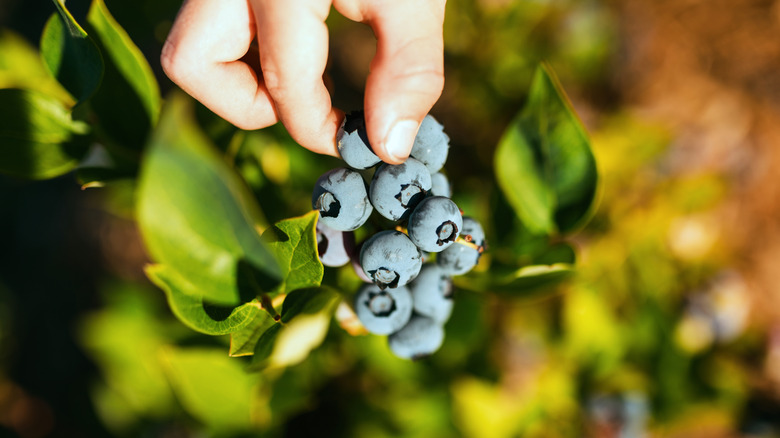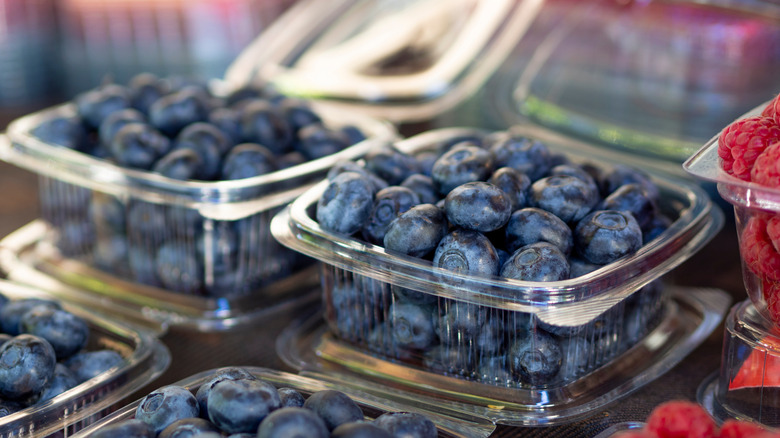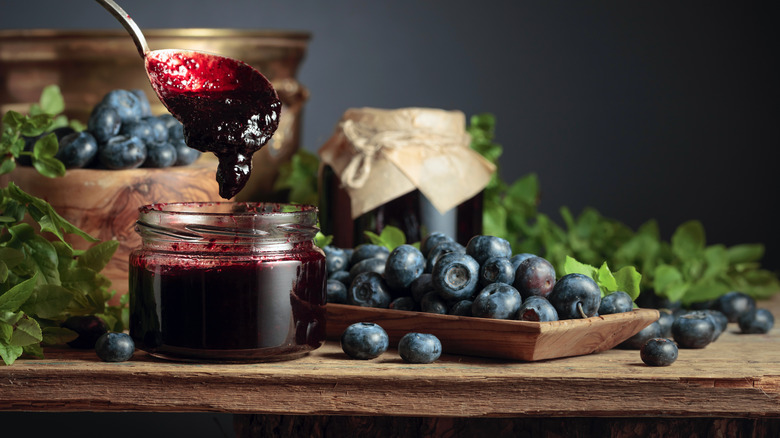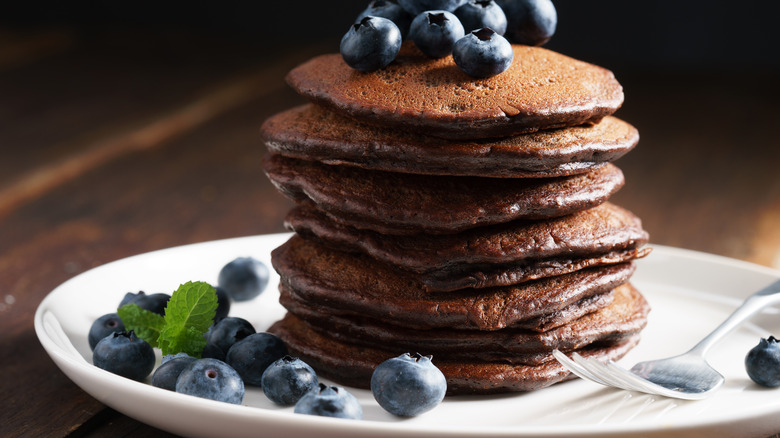The Ultimate Guide To Blueberries
The season of blueberries is a fleeting moment, but we eagerly anticipate its arrival year after year. It somehow always brings memories of carefree childhood afternoons spent picking these precious little berries in the sun-dappled meadows. Stained hands (and mouths) would mark a day well spent, with very little to show for in our baskets. And in Southern spots like Florida and the Gulf Coast to northern states like Maine, these juicy, plump fruits can be found at markets and farms all across the country.
While no one is going to argue with us that blueberry muffins are one of the greatest (edible) things that humans have ever created, there's so much more to learn about this beautiful berry. In this guide, we'll delve deep into the topic, from the best places to pick blueberries and how to preserve them through drying and freezing to exploring what makes them an ultimate superfood.
From wild bush to supermarket shelf
Originally from North America, wild blueberries have been a part of the life of indigenous people for at least 11,000 years. European settlers first observed Native Americans using tiny blue berries in the 16th century. Sometimes called "star-fruits" (due to the five-pointed star shape formed at the end), sun-dried blueberries were used in the type of bread made with pounded cornmeal and mashed beans. As American naturalist Henry David Thoreau later observed, Native Americans also utilized Vaccinium plants for medicinal purposes, including purification of the blood and inducing labor.
In the early 20th century, blueberries were cultivated for commercial production for the first time, thanks to the work of Elizabeth White, a cranberry farmer from New Jersey, and Frederick Coville, a USDA botanist. Together, they experimented with different varieties of wild highbush blueberries and discovered optimal growing conditions. In 1916, they harvested and sold their first commercial crop of blueberries.
During the early 2000s, researchers first started looking into the antioxidant properties of blueberries, earning them a "superfood" label and leading to a global increase in blueberry cultivation. Today, almost 1.8 million metric tons of blueberries are produced worldwide (nearly four times more than in 2010). China holds the title of the largest blueberry producer, with the U.S. and Peru following close behind.
The (most) common blueberry varieties
Blueberries are members of the heath family, along with their cousins, huckleberries, cranberries, and bilberries. The Vaccinium genome is incredibly rich and thrives across different climate zones around the world, which is why they are often confused with similar berries like huckleberries. If you're unsure, huckleberries are smaller and darker than blueberries and have a more intense flavor with a slightly earthy undertone.
There are five common types of plants within the blueberry family tree: Northern highbush, Southern highbush, lowbush, and rabbiteye. Northern highbush blueberries are particularly cold-hardy and can withstand temperatures as low as -25 degrees F, whereas southern highbush and rabbiteye blueberries are more heat-tolerant and flourish in Southern regions.
When shopping for blueberries, you'll most likely encounter highbush varieties. Bluecrop is one of the most commonly grown highbush varieties worldwide, thanks to its big yields, adaptability, and disease resistance. It produces medium-sized, dark blue berries that are sweet with a light tartness. Duke, on the other hand, is a runner-up and has hints of citrus or pineapple.
What are wild blueberries? (And where to find them)
Wild blueberries are smaller, sweeter, and more nutritious than the cultivated ones you usually find at the supermarket. They are also harder to come by fresh. If you are lucky enough to spot them, their taste is incomparable to regular blueberries — they are sweeter, less watery, and immensely flavorful. What's more remarkable, because of the harsh environment they grow in, they have developed a much higher concentration of antioxidants.
Wild blueberries (or lowbush blueberries) are around half the size of cultivated varieties and reproduce by seed and underground stems called rhizomes, forming dense mats of lowbush plants. In the wild, they are only found in particular regions. In the U.S., Maine is a home to about 90% of the wild blueberries in the country.
If you're hunting for them, know that wild blueberries only grow in acidic, sandy soil unsuitable for most crops — open fields that receive plenty of sunlight and rainfall would be a good place to start. The best time to find them is from late July to early September when they ripen and turn from green to red to purple. But that doesn't mean you must embark on a cross-country journey to taste them. Most wild blueberries can be found in the freezer aisle year-round.
Best places to go blueberry picking
If you live in the Northeast, you might want to visit Parlee Farms in Tyngsboro, Massachusetts. This family-owned farm has been growing the fruit since 1991 and offers more than 10 varieties of highbush blueberries. You can pick your own blueberries from mid-July to late August or buy them pre-picked at the farm stand.
For those in the Midwest, The Blueberry Patch in Mansfield, Ohio, is an excellent destination for blueberry picking. This is the largest blueberry plantation in the state, with over 27 varieties. You can even pick your own blueberry plant from the nursery for your own garden.
If you value organic produce, you will certainly appreciate Bow Hill Blueberries in Bow, Washington. This is the oldest blueberry farm in Skagit Valley, dating back to 1947. You can pick the finest heirloom blueberry varieties or choose among award-winning organic blueberry products, from their blueberry juice to powder and pickled blueberries.
If you're in the South, head to Holmestead Farm in Talladega, Alabama, where you can pick your own blueberries or grab jars of homemade jam. The farm also has a variety of blueberry bushes you can purchase to take home, such as Tiffany Blue, Premier, Titan, and Brightwell.
A superfood with countless benefits
Blueberries are one of those nutrient-rich foods that are extremely easy to include in your diet. They are small, uniform, and require no preparation — just wash them and pop them into your mouth. But there's more beyond that pretty blue shell. The attractive purple-blue color in blueberries indicates the presence of powerful antioxidants called anthocyanins, which can protect your cells from oxidative stress and inflammation linked to many chronic diseases, such as cancer, diabetes, and heart disease, per Frontiers in Pharmacology.
In addition, blueberries contain non-flavonoid polyphenols such as phenolic acids and stilbenes, renowned for their anti-inflammatory and anti-microbial properties (via MDPI). If that's not enough to convince you, Healthline affirms they are an excellent source of fiber, vitamins C and K, manganese, and other vital nutrients that support your immune system, promote bone health, and prevent cognitive decline as you age.
To maximize these benefits, consume blueberries regularly. Fresh or frozen blueberries retain more bioactive compounds than processed or dried ones. You could also combine them with strawberries or apples to increase their synergistic health benefits. Just avoid heating the blueberries, as this, too, may reduce their antioxidant activity.
What to look for when buying (or picking) fresh blueberries
Blueberries have a short peak ripeness period, which means they are at their best for only a few days after they reach their peak blue color. Once they do, they are usually left on the bush for three to four days to develop their full flavor and sweetness. After that, they will start to lose their quality and freshness and may become overripe or spoiled.
When you're shopping for blueberries or picking them at your local farm, the first thing you should look at is their color. They should be a deep blue to purple-black hue, with a white or grayish dusting on the surface. This dusting is called the "bloom," a natural protection that shows freshness and quality. Stay away from green, red, or brown blueberries, as they are either not ripe or spoiled.
Perfectly ripe blueberries should be firm and plump to the touch, not soft or wrinkled. They should also be dry and smooth, as moisture can cause mold and spoilage — avoid damp blueberries with signs of leakage. Finally, just smell the berries. Blueberries should have a mild and sweet scent. If you pick up a funky aroma, it likely indicates fermentation or decay.
How to store your blueberries
To get the most out of your blueberries, it's essential to keep them fresh. Once they're picked, the clock starts ticking, so proper storage is crucial to maintain their taste and nutritional value. If they're exposed to moisture or inadequate temperatures, they can develop mold and spoil rather quickly.
The best way to keep blueberries fresh is to refrigerate them. You will need a clean, airtight container and a paper towel to absorb excess moisture; this prevents the berries from becoming soft and squishy. If you plan on storing them longer, freezing them is a sound option. Just lay them out on a baking sheet in a single layer, freeze them individually, and then transfer them to a freezer bag. This way, you can enjoy them well beyond their peak season.
Blueberries can last up to two weeks in the refrigerator, while frozen blueberries retain their taste, color, and most of their nutritional value for up to a year. However, the antioxidant properties have been shown to decrease by more than half after six months in the freezer. Remember to never keep blueberries in direct sun or at room temperature for extended periods, as this will surely hasten their demise.
Best ways to preserve blueberries
If you want to enjoy the taste of blueberries year-round or prevent them from going to waste, you can preserve their delicate sweetness in many different ways. Drying blueberries is one such great option — that is, if you own a dehydrator. Simply place them on a tray with enough space between them and let them dry for 24 to 36 hours. The result is a chewy, delicious snack with a more concentrated flavor you can add to your salads, trail mix, or baked goods.
Making homemade blueberry jam is yet another age-old method to extend the shelf life of your precious berries — an undisputed classic for toast, scones, or as a filling for pastries. Start by cleaning your blueberries, then mix them with sugar, lemon juice, and zest in a saucepan and simmer until you reach the desired consistency. Fill sterilized jars with jam (leaving some headspace). Sealed jars can be stored for up to a year; just be sure to refrigerate after opening.
Whenever you feel adventurous, blueberry-infused vinegar makes for a tangy salad dressing, unique marinade, or secret cocktail ingredient. Start by thoroughly washing and drying your blueberries, then place them in a clean glass container, such as a mason jar. Heat white or apple cider vinegar until it's warm but not boiling, then pour it over the berries, ensuring they're completely covered. Seal the container and store it in a cool, dark place for a few weeks.
Which foods go well with blueberries?
One of the simplest and most effective ways to bring out the flavor of blueberries is to pair them with lemon. The acidity and brightness of lemon juice (and zest) contrast beautifully with the soft sweetness of berries. It's a refreshingly balanced combo that works wonders for desserts like muffins and cheesecakes but can also be an intriguing accent in your marinade or dressing.
Another classic partner for blueberries is vanilla, which adds a rich and aromatic dimension and enhances the sweetness and complexity of the berries. This mix is great if you're whipping up a honey-sweetened yogurt or looking for a time-proven combo to flavor your ice cream.
It goes without saying that blueberries and chocolate are a match made in heaven. Both white and dark chocolate create a rich and luxurious contrast with blueberries, making them absolutely irresistible. Combining those two makes for a real antioxidant bomb, as both contain significant amounts of flavonoids. Use chocolate with blueberries in brownies or pancakes, or throw some into granola.
